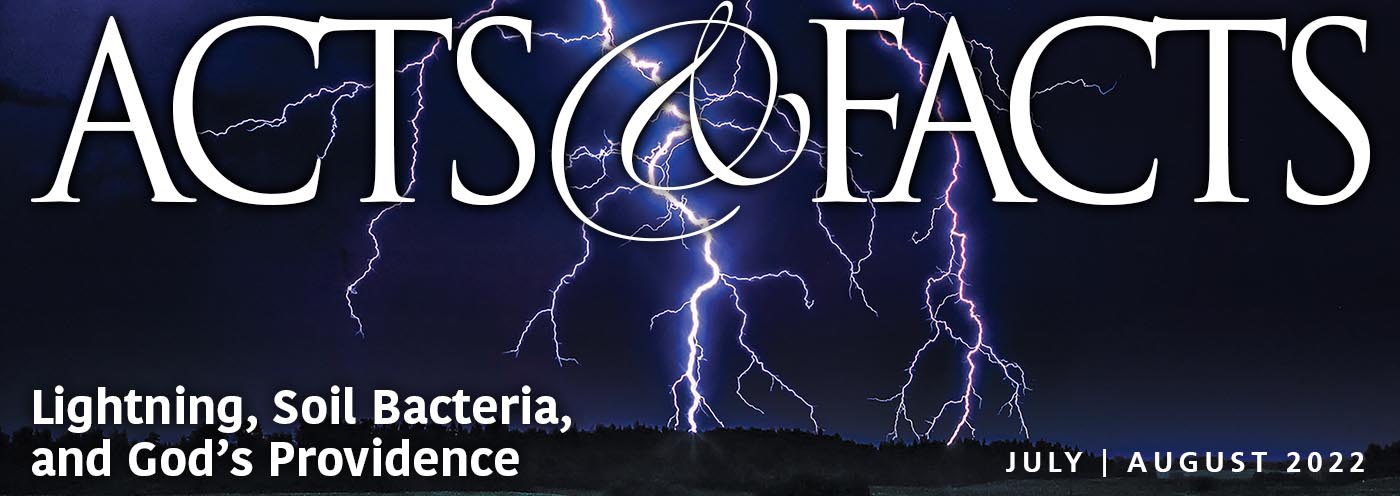The Coconino Sandstone, famously exposed near the top of Grand Canyon’s splendid sedimentary layers, remains a controversial rock. Two counterclaims vie for its origin. If wind formed the Coconino’s now-hardened sand dunes, then the whole region must have been dry land exposed to the air—unlike the Bible’s portrayal of a worldwide Flood. But if water formed the Coconino’s features, then the whole region must have lain under water just like Bible’s Flood portrayal. Three newly described features match the biblical option.
A pair of geologists from Loma Linda University described small features they saw on exposed surfaces within the Coconino. Publishing in the journal Frontiers in Earth Science, they classified the features as soft sediment deformation structures, or SSDSs.1 These included folds and ridges, rotated blocks, and small, cone-shaped pits. The team found these SSDSs on the surfaces of cross-bedded planes within the rock layer. Cross-beds exposed in cliff sides look like stacks of the letter “V” by lying on their sides. How did these SSDSs get there?
Strange things were happening when giant sand dunes were piling up to form the Coconino Sandstone. Some fluid—air or water—pushed sands over dunes from north to south2 as it covered “northern Arizona and large parts of Utah, New Mexico, and western Colorado.”1 It is possible this sand unit extends farther north into Wyoming and Montana.2
Two features already indicate watery deposition, in contrast to longstanding rhetoric among geologists about windblown sands atop Grand Canyon’s waterborne rocks. First, the dip angle for Coconino’s cross-beds “with an average slope of 20â°” matches what we see when underwater sand dunes form.2 In contrast, windblown sand dunes form most often at a steeper angle of about 32â°.3
Second, some of Coconino’s cross-bed surfaces have reptile footprints, complete with claw marks.4 Dry sand does not preserve claw marks.
This new study documents small folds and ridges that resemble the “avalanching of wet sand.”1
Next, the “rotated blocks and other SSDSs in the Coconino SS appear to have required some type of liquidization to displace or deform the sediment.”1 The study authors suggested that water escaping from the sand could have displaced the small blocks.
Third and finally, the tiny cone-shaped pits (once interpreted as ant lion pits) paralleled the folds and ridges as though the two features formed together. It looks like the pits formed not from any insect but from wet sand that got squeezed. This forced tiny water blasts to clear cone-shaped spaces in the sand. The authors described “the pits as probable water escape structures [that] indicate that a significant amount of water was present to liquefy the sand.”1
So, plenty of water was there after all.
Plus, some shaking. “We suggest that the pore water pressure could have provided the shear stress necessary to deform the sand, if a trigger initiated shaking or vibration of the sediment.”1 They offered seismic activity as additional energy to shake the still-wet sand deposits.
These careful observations confirm watery origins of widespread sediments that the worldwide Flood would have formed.
References
1. Brand, L. and S. Maithel. 2021. Small-Scale Soft-Sediment Deformation Structures in the Cross-Bedded Coconino Sandstone (Permian; Arizona, United States); Possible Evidence for Seismic Influence. Frontiers in Earth Science. 19 November, 2021.
2. Whitmore, J. 2019. Lithostratigraphic Correlation of the Coconino Sandstone and a Global Survey of Permian “Eolian” Sandstones: Implications for Flood Geology. Answers Research Journal. 12 (2019): 275-328.
3. Whitmore, J. 2019. A Global Survey of Permian “Eolian” Sandstones: Implications for Flood Geology. Answers Research Journal. 12 (2019): 275–328.
4. Brand, L. R. and T. Tang. 1991. Fossil Vertebrate Footprints in the Coconino Sandstone (Permian) of Northern Arizona: Evidence for Underwater Origin. Geology. 19: 1201–1204.
Dr. Brian Thomas is Research Scientist at the Institute for Creation Research and earned his Ph.D. in paleobiochemistry from the University of Liverpool.







